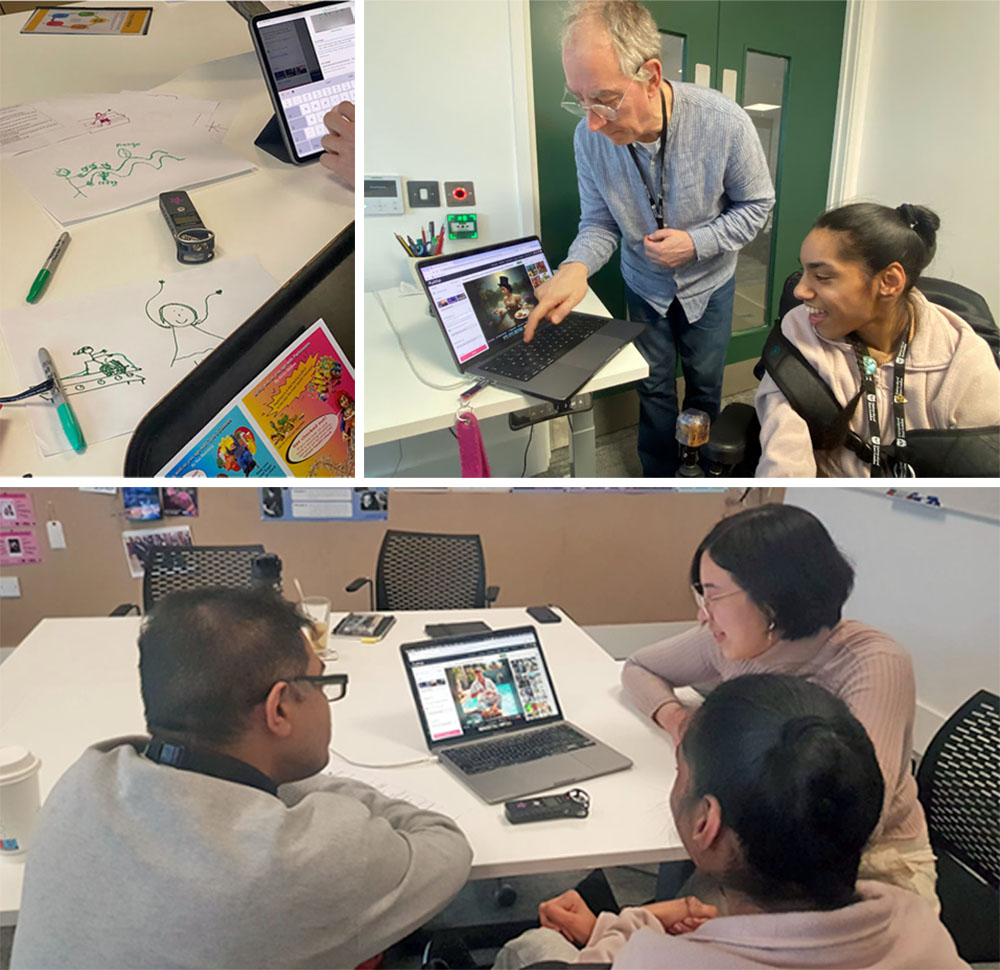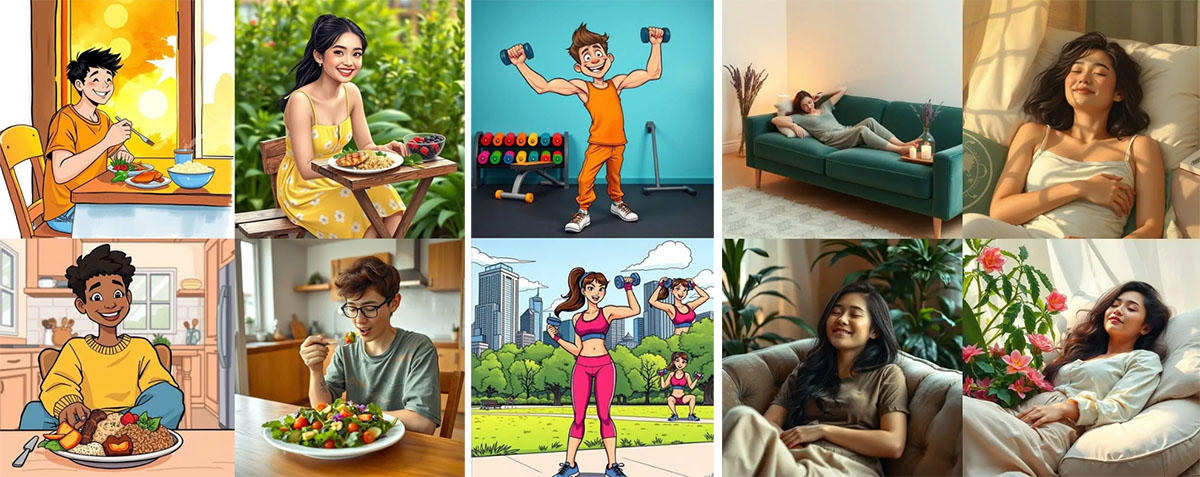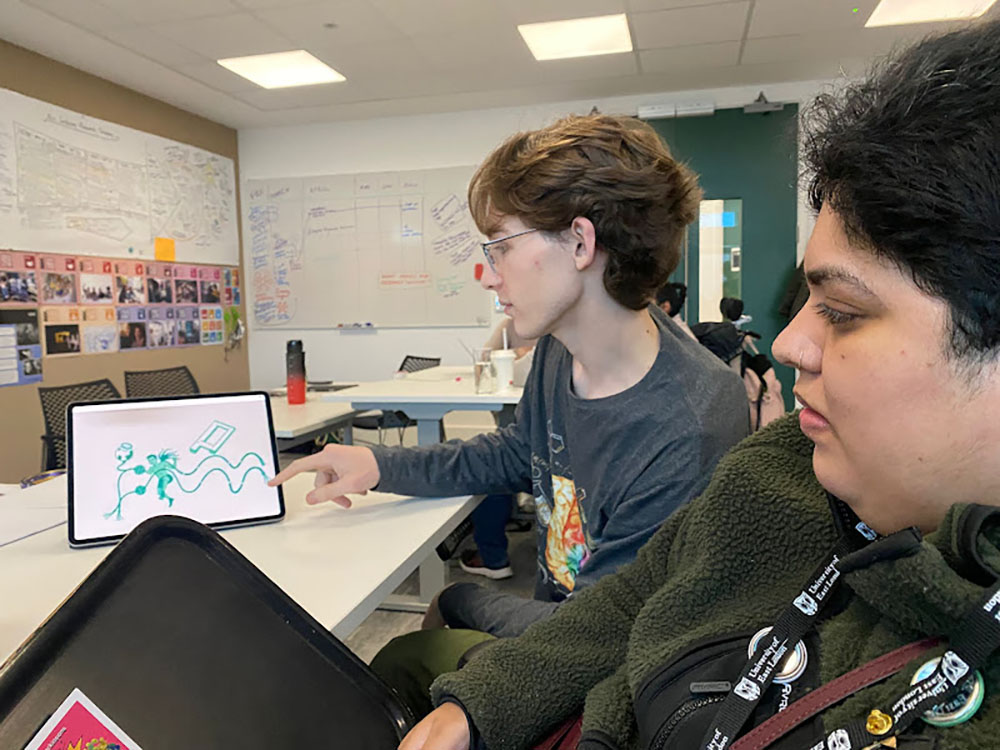I’m in the RIX office looking over the easy read agenda that my teammates drew up for the event. Soon, the real stars of the show begin to file in, our team of co-researchers, who bring lived experience of disability and are leading the exploration of this question with us.

The topic of the day: Exploring one way in which AI tools could help people with physical or learning disabilities communicate and express themselves.
The problem: People who process information differently may encounter challenges with traditional text-based communication, and people with differences in manual dexterity may face barriers when using standard typing or drawing tools to create.
One type of AI tool that shows some promise in this area is image generation, which creates full quality pictures from only short text descriptions. Image generators can offer an alternative way for people to engage in artistic expression, reducing the barriers posed by traditional text and drawing tools.
While many different image generators are available, (such as DALL-E, Copilot, Wombo, and others), for this workshop we’ve chosen to use NightCafe, a popular free web-based service.
To start off, Kate and Nic explain the premise of the workshop and the basics of how image-generation AI works. We then split the participants into three groups, each focusing on a different way of interacting with the software:
- Text input only
- Voice-to-text dictation
- Text paired with a hand-drawn seed sketch which the program uses as a base to create its output
For some direction, we give the participants the theme of sharing tips for living well as you age with particular focus on healthy eating, exercise, and mental wellness. For the next hour, the co-researchers let their creativity go wild, thinking up new ideas, seeing what the AI generator could create, and testing out different ways of using the tools. They take turns at each station, so every person gets to try out each method.

I see so much enthusiasm, laughter, and enjoyment among the co-researchers. They seem delighted to discover this new tool together. I’m primarily helping out at the seed sketch table, using the iPad to take pictures, but I mill about here and there to see how things are going. While I’ve taken time to play with various AI generators before, I’m still amazed to see some of the novel creations our participants come up with. At the end, we all share our work and discuss.

So, what were the takeaways from this? What did we learn? Is AI actually inclusive or not? We had two main goals with this workshop: to explore the creative potential of image generation and to examine how accessible these tools are for a diverse range of users.
On the first point, NightCafe does its job reasonably well. There is a tremendous satisfaction in being able to create something that looks good, and NightCafe greatly reduces the effort barrier needed to do that. The AI can interpret broad or simple descriptions, which may benefit users who communicate ideas in ways that differ from standard written language.
On the second point, we did find several significant obstacles for this tool’s accessibility. The user interface was cluttered and instructions were lacking, making it difficult for people who process complex layouts differently to use independently. The absence of a built-in drawing canvas forces users to physically lift the device to photograph their seed sketch, creating unnecessary obstacles for those who interact with technology in ways that don’t rely on fine motor control. Additionally, the lack of an integrated dictation feature requires users to troubleshoot compatibility with external tools, adding extra steps that exclude those who rely on voice input for ease of access.
So, in conclusion, we see that while the underlying AI technology has significant potential as a creative tool, there are still great strides to be made in the accessibility and usability of the services through which people interact with it.

Henry Devenport, CAPA Intern

